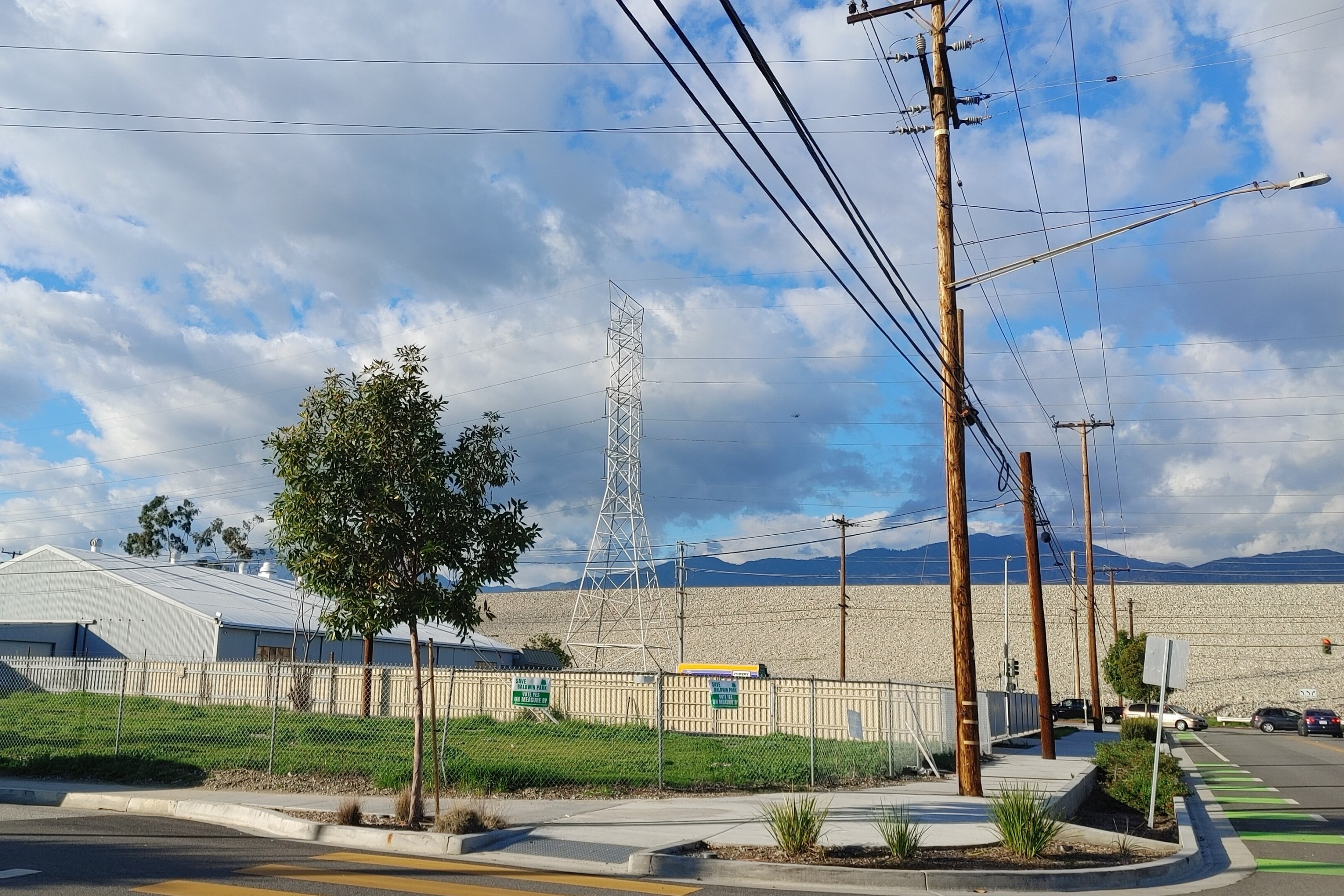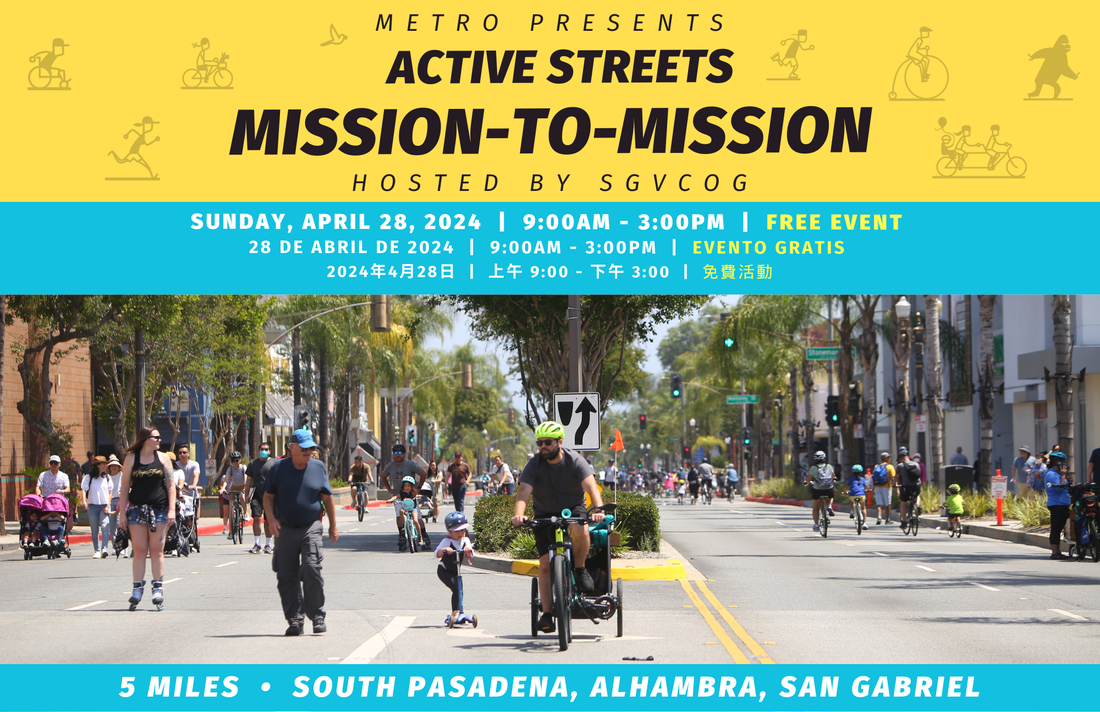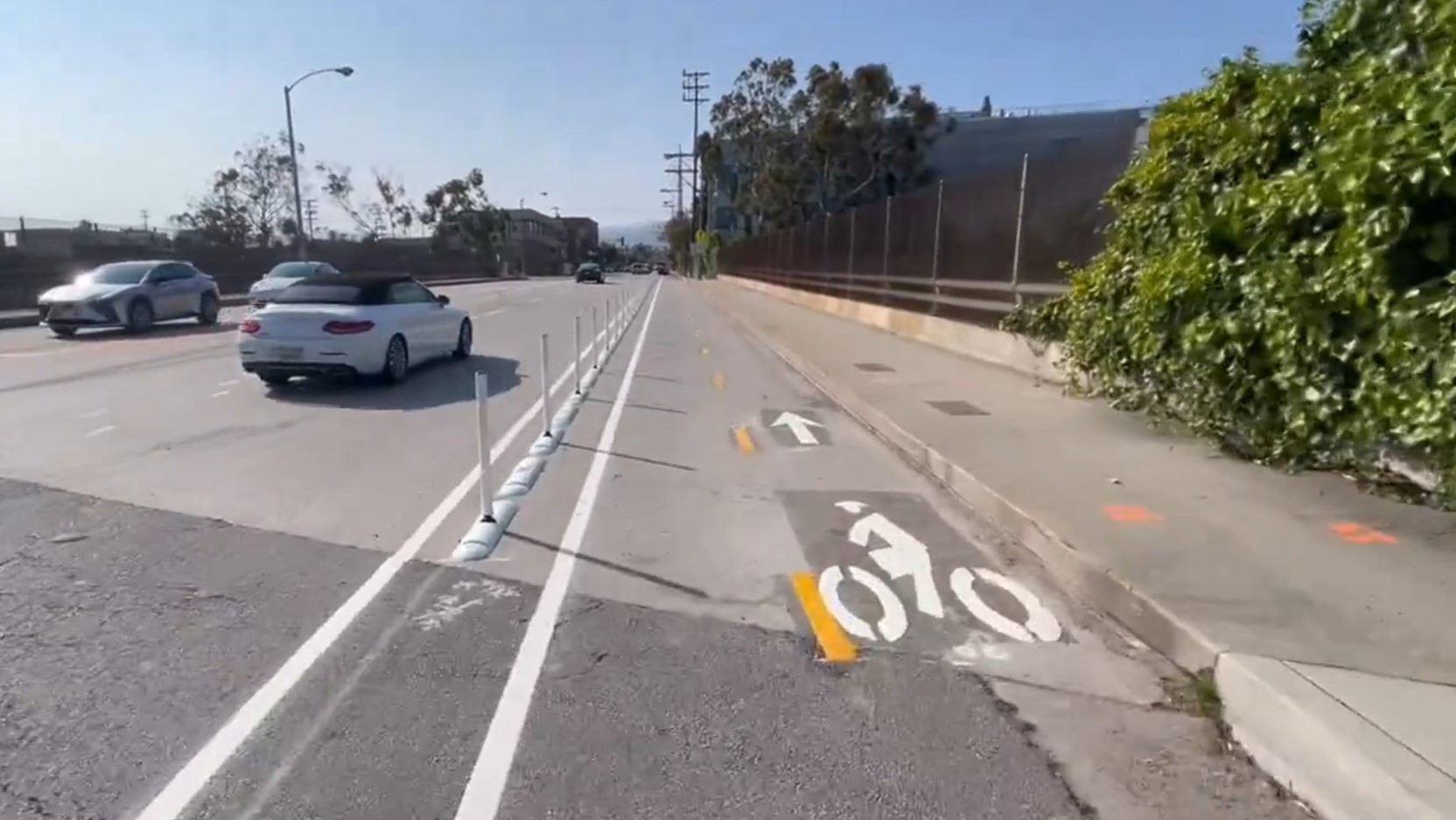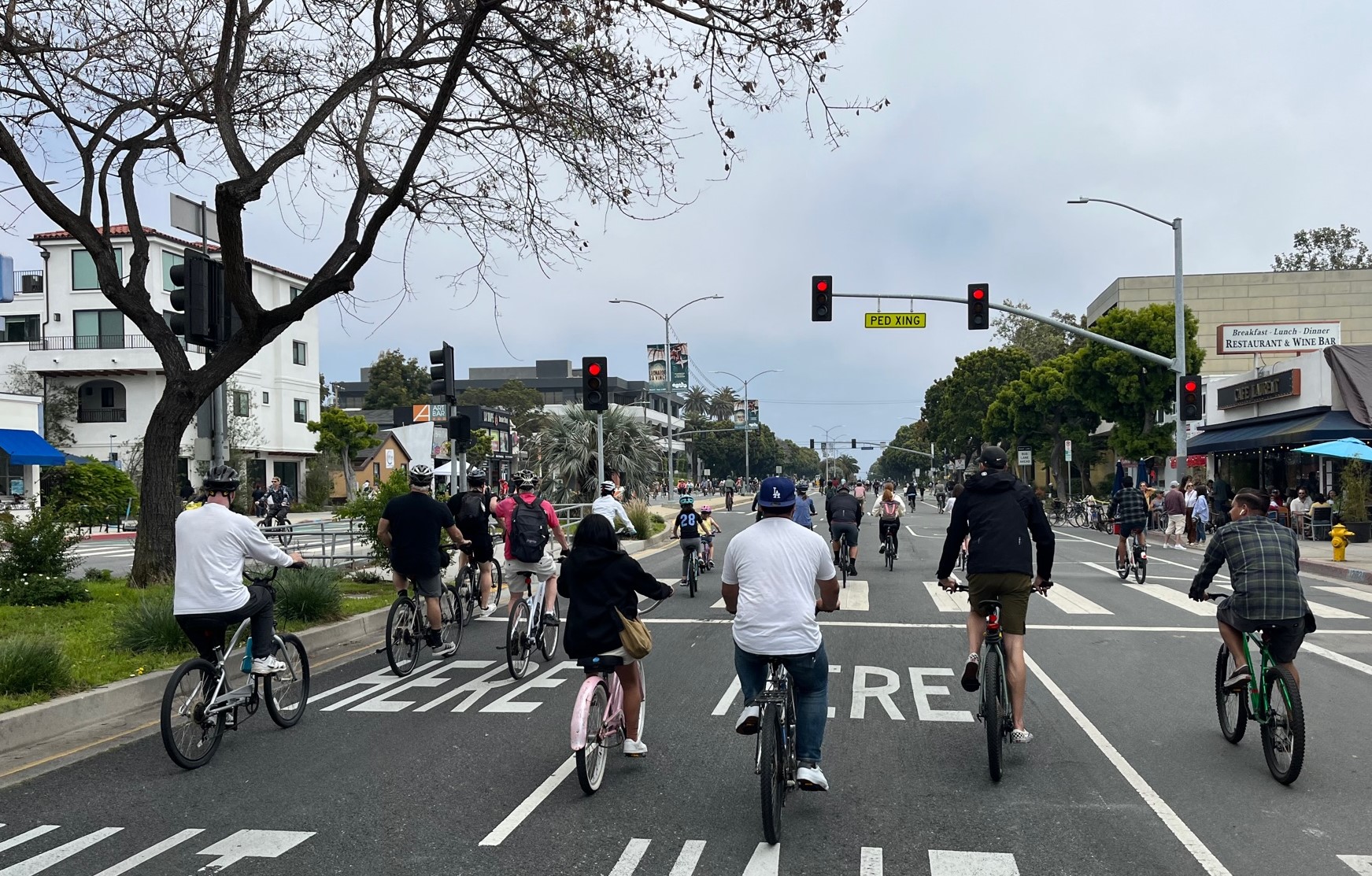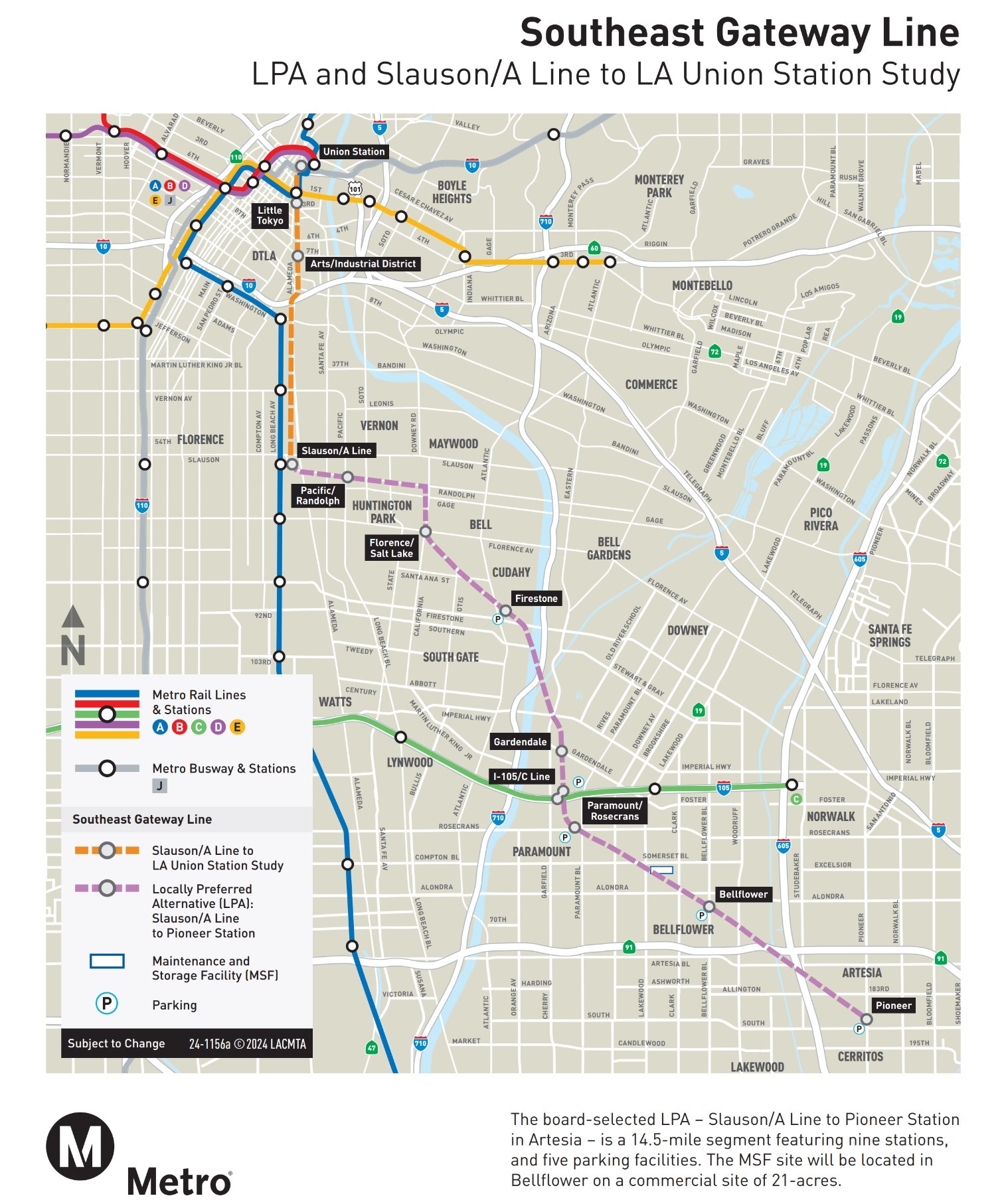TAD or TOD? A Look at the W at Hollywood and Vine
9:02 AM PDT on March 31, 2010
 Nice car advertisement at the billboard. Photo: Erik Oginski/Flickr
Nice car advertisement at the billboard. Photo: Erik Oginski/FlickrOne of my favorite transportation rhetorical devices has always been the relationship between Transit Oriented Development, or TOD, and its evil brother, Transit Adjacent Development, TAD. TAD breaks all the rules that make TOD work, but because they can look similar they often get confused. Unfortunately, TAD can give TOD a bad name.
From Reconnecting America, a national non-profit that advocates for more and better TOD nationwide, explains the difference between TAD and TOD in this article in Mass Transit Magazine.
TAD is TOD gone bad, development that is adjacent to transit but breaksall the rules that make TOD work, like making public spaces the focusof building orientation and neighborhood activity; creatingpedestrian-friendly street networks that directly connect localdestinations; and providing a mix of housing types, densities andcosts.
Other definitions of Transit Oriented Development include "restriction of automobile parking," "affordable housing elements" and "bicycle access."
Reading some of Stephen Box's criticism of Metro and the W in recent weeks, it got me to wonder. Is the W, the diamond of Metro's TOD programming, really transit oriented or merely transit adjacent? We've already seen how some of Metro's other "TOD" projects undermine themselves by having an abundance of automobile parking, even more than the state average; or desperately announce to the public their free parking.
The best argument that it is truly a piece of Transit Oriented Development comes from The Source. Fred Camino writes lovingly of the beautiful work done to connect the station to the plaza in front of the W.
Beyond aesthetics, the redesign is functional, effectively creating afantastic public space with ample seating and plenty of access totransit information. According to Metro staff involved in the redesign,much work was put into making sure the station entrance wasunmistakeably visible from the street in order to adhere to the goalsof TOD, and I’d say they’ve succeeded admirably. With the exception ofan unfinished Metro pylon, the station entrance is unmissable.
But in the same piece, Camino, who doesn't serve as anyone's house organ, also takes the W to task for barely mentioning transit on their website. Somewhere they mention being located on top of the Red Line, but without the link Camino provides I couldn't find it on my own. Two months later, they still haven't added any mention of Metro to the most visible parts of the site.
A visit to the W Hollywood Hotel’s website revealsnothing about the hotel’s transit accessibility, especially oddconsidering it’s built right atop a subway station and it was madepossible due to a joint partnership with the local transit agency. Ofcourse, driving directions from every point on the map are included.
So even by The Source's standards, a mixed review for the W from a development standpoint. High marks for the plaza. Low marks for encouraging independence from automobile. So let's look at some of the other standards that differentiate TAD and TOD.
Undoubtedly, this area of Los Angeles, in the heart of Hollywood, is one of the more pedestrian friendly areas of Los Angeles. Only the stars on the ground differentiate the foot traffic from what you'd see in Midtown Manhattan. So the W's location earns it some points, but what are the pedestrian benefits of the development? When the W was first being pitched the community there was talk of pedestrian scrambles at the intersections surrounding the development. That idea has certainly died somewhere in the negotiating process. Again, an at best mixed grade.
But when it comes to "providing a mix of housing types, density and costs," which is a long way of saying "needs affordable housing" the W doesn't have a mixed grade. It fails miserably. The least expensive unit for sale in the apartment units sells for $800,000. Affordable? Not for this blogger, even with a business development executive for a wife.
When it comes to parking, not only does the W fail, it fails proudly. The W didn't seek an exemption from the city's parking minimums citing its existence as "Transit Oriented," which means that there's going to be more cheap parking than the eye can see, but instead revels in its car culture. Don't believe me? Go to the W Hollywood Residences Site and click on "Wheels" in the "Experience W" section. It's a love letter to car parking. Literally.

Box also shows, in the second picture from the top in this article, that the W encourages people to drive (or ride in their limos) to their club and other attractions to the point of leaving cars standing in "no-parking" zones until the valets can get to work. The cost of the valet? A wallet-friendly $16.
Last but not least, is the development bicycle friendly. I'm not going to re-hash all of Box's arguments, but suffice it to say he demolishes the idea that the development is bike friendly. Most damningly, there is not one bike rack anywhere on the site. Two months after it opened, Metro says racks are coming to a little room located off to the side this summer, there isn't one single rack on site. Towards the bottom of the article linked to in this site, Box lists eight ways Metro can fix the bike issue; but with mixed and failing grades in all the other sections not even following these suggestions can save this development from being named a TAD.
The W Development is certainly an attractive destination that will probably make its investors and developers a lot of money. The bar looks classy, the pool club on the roof looks like a certain hot spot and the condos look as though they're out of a movie about living the good life. It may be all those things, but as an example of Transit Oriented Development, the W is a TAD, not a TOD, and there's a lot that would have to be fixed for it to be anything else.
Stay in touch
Sign up for our free newsletter
More from Streetsblog Los Angeles
This Week In Livable Streets
Active Streets Mission-to-Mission, LAPD reports on its use of force in 2023, Pasadena Transit plans, Metro subway construction, and more
Eyes on the Street: Santa Monica Connection from E Line Bike Path to Downtown Is Almost Complete
“Always be closing gaps in your bikeway network.”
CicLAvia Opens Venice Boulevard – Open Thread
CicLAvia opened six miles of Venice Boulevard - from Culver City Station to Venice Beach
